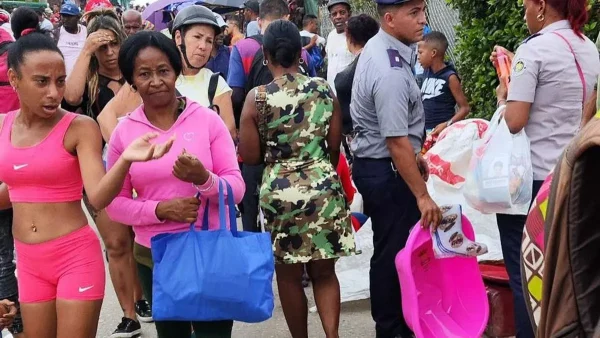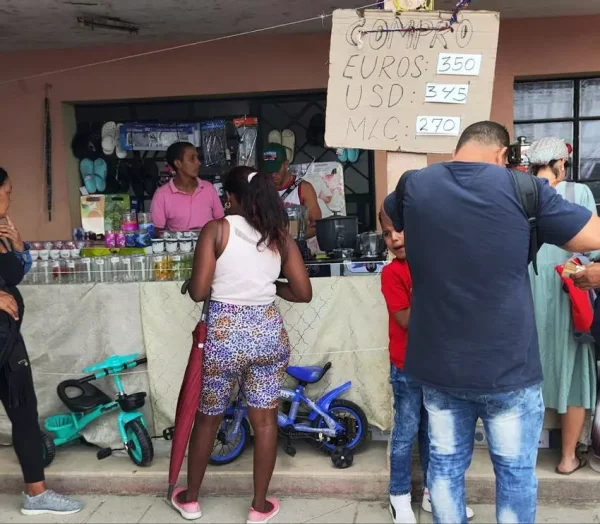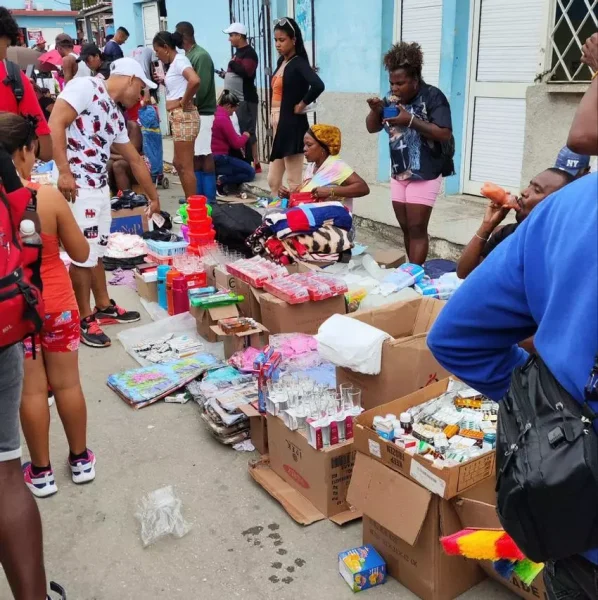La Cuevita, Where Capitalism Works in Cuba

The sale of medicines and the purchase of foreign currency, all informal, happen in plain sight of the police and despite their operations
By Juan Diego Rodriguez (14ymedio)
HAVANA TIMES – The market known as La Cuevita, in San Miguel del Padrón, on the outskirts of Havana, is not larger than the one that extends under the bridge at 100 y Boyeros in the capital, but it has a greater impact. “The space for the self-employed stalls is small, but it’s the immense informal sales around them where most buyers go,” says Nelly, who accompanies 14ymedio on their visit to La Cuevita this Friday.
Nelly lives in Ciego de Ávila but comes every month. Before, she used to work as a “mule” going back and forth to Haiti, but with the upsurge of violence in that country, she has switched to the markets in Havana. She’s not alone. “We all come with suitcases and then we go back to our provinces to sell the things there.”
“It’s like arriving at the bus terminal, really,” says Raniel, who has come to La Cuevita to buy medicines. In the legally established self-employed premises, there is costume jewelry, watches, clothes, caps, or eyeglasses, but it’s the informal vendors who display an infinite arsenal of all kinds of items. Among them, medications stand out especially.
“They arrive and spread out a box full of medicines in an aisle and they stand there selling them,” explains Raniel, who prefers to buy at La Cuevita than on online sales pages, where they are more expensive. It’s easy to observe that most of them are imported, brought in by mules, but quite a few are Cuban-made, which indicates that they come from the state market. “Cuban enalapril sells here for 250 pesos per blister, and on Revolico, it’s between 300 and 350 pesos. And in the pharmacy? “Forget about it! Enalapril is nowhere to be found in the pharmacy,” says Raniel.

Anti-inflammatories, painkillers, diclofenac with paracetamol, antibiotics of all kinds… Anyone visiting these stalls would say that in Cuba there is no problem of medicine shortages that chronically affects the healthcare system.
Other eye-catching counters are those for foreign currency exchange. Just like with medicines, as if it were a legal activity, huge signs indicate the exchange rate: the euro at 350 pesos, the dollar at 345, and the magnetic currency (MLC), at 270. “People come and, as if it were a Cadeca [Currency Exchange House], they take out their money or euros and sell them there, without hiding anything,” says Nelly, who is no longer so surprised by the activity. And the Police? Because, on paper, this illegality carries high fines. “These people must have inspectors bribed, because there are police operations every day, but the vendors remain so calm.”
During its tour, this newspaper was able to verify, indeed, that there are numerous agents moving through the aisles. “Police officers also have to solve their problems, that’s why they are here buying their things,” argues Nelly. In the time she has been involved in reselling in the provinces, she has never been fined, but she has a friend who has not been so lucky. “She already has 8,000 pesos in fines, but she comes back, she comes back, because it’s true that we don’t have another way to make a living in this country.”
If you spend enough time in La Cuevita, you can also see that many surrounding houses are used as warehouses, also informal. It is in these places where small appliances abound, such as pressure cookers, induction cookers, or fans.
It’s hard to make your way through the aisles because of the number of people there, who, amid shoving, mingle with those offering their merchandise: liquid detergent, soap, toothpaste, chicken, oil, medicines, spaghetti, elbows, potatoes… “Even packaged coffee like the one in the ration store,” says Raniel, who is convinced that many of these are products diverted from the state market.

The young man takes care of himself among the overwhelming crowd: “Here, you take out your wallet, pay, and in the process of putting it back in your pocket, they take it away.”
La Cuevita has been known to Habaneros since the 1980s, although it did not begin to gain prominence until the migration reform of 2013, which allowed Cubans to enter and leave the island more easily.
But it was with the established rule of eliminating tariffs for food and medicines, following the demonstrations of July 11, 2021, that the market became very crowded.
A mirror vendor approaches: “If you buy the large and medium ones, I’ll give you a small one as a gift,” he offers, as if he were in a capitalist street market. “There is a lot of movement,” says Raniel. “People come here to struggle, to make a living.” And he jokes: “It’s as if capitalism existed in Cuba.”





